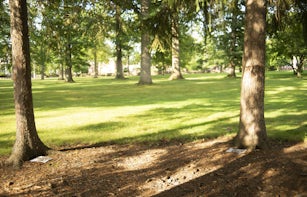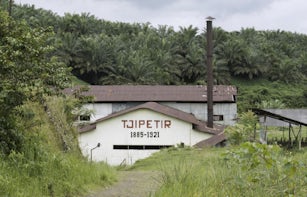The forest is a living organism and a complex space that possesses its own logics. In the time of the Anthropocene, it lives with the human and has been decimated by it. Rather than seeing the forest frontier as a space of purity, or a space of exploration, we might consider how the colonial/modern forest is actually a densely occupied space of harsh and discordant activities.
For instance, Mapuche director Francisco Huichaqueo’s 38-minute experimental film Mencer: Ni Pewma (2011) represents the forest as an affective space of confusion, elision and disappearance, rather than as an intact ecological wonderland. The film refers to the physical occupation of Mapuche land by military and police forces, as well as the project of land and water defence. But another kind of occupation is also at play: invading the forest are foreign tree species grown for export – rows and rows of radiata pine and eucalyptus plantations. These have replaced the original Pehuén (monkey puzzle tree) in ancient forests now several hundred years old. The film depicts a history of Indigenous uprising in the face of forces of dispossession that date back to the Spanish militias of the sixteenth century.01
This powerful film shows what is at stake in current violence against the forest. Like other semi-tropical and tropical forest biospheres throughout the Americas, the original Pehuén forests of the Wallmapu region were dramatically reduced through forest laws of the 1990s that privatised Indigenous territories, with devastating consequences for those who continue to live with the ongoing consequences of reduction, enclosure and removal. In Mencer: Ni Pewma, we hear the confused echoes of lamentation as emanating from ancestors from the other side of the colonial divide, as though the charred landscape of ubiquitous monocultural plantations of radiata pine and eucalyptus is demanding retributive justice. As they search for anchor points in the depleted forest, these ancestors mourn the near extinction of the native Pehuén forests.

Forest Law (2014), a 38-minute video projection by Ursula Biemann and Paulo Tavares shot from two different perspectives, considers similar themes of the forest’s occupation. The video contends with the inability of human representation to address the world of the forest, reflecting on the failures of institutions to represent nature in general. In the history of the Americas, the law has served as a blunt tool for forest protection, as it has often instead been weaponised in the interests of national elites as well as local and global capital. The violent terrain of occupation enters the frame differently in Forest Law when compared with Huichaqueo’s work. Although Forest Law is quieter, the cacophony of occupation is omnipresent. We are shown instruments of measurement, management and cataloguing, and hear from scientists who understand the forest as an endless source of knowledge, genetic and medicinal production. In the layers of lush forest life, we see how the scars of oil drilling diminish the capacity of Eastern Amazonian biodiversity. Extractivism is present both inside and outside of the frame, yet it is not the main subject. Instead, the central figure is the living forest and its interactions with humans like the narrator Franco Viteri, who describes his rich life in Sarayaku, made possible through a sustained relationship with the local habitat.
Seeing Forest Law for the first time on my small laptop computer in 2017, and later at a private screening at Mary Porter Sesnon Art Gallery, University of California, Santa Cruz, I was moved by the saturation and myriad green colours on the screen, as well as the multi-tiered architectural environment of the forest. Having spent time researching and living in the Amazon, I could relate to how its spatial structures, its clustering shapes and the various views that produce a natural built environment were rendered visually in the installation and its two components. The two-channel film captures the variety of spatial openness and closure that characterises the Amazonian forest with its the multidimensional forms. Verdant forest is shown on the two sharp screens in the foreground, while on the side a photo-text assemblage in a glass case gives contextual information about the history of extraction in Ecuador.




